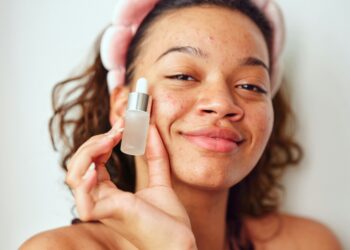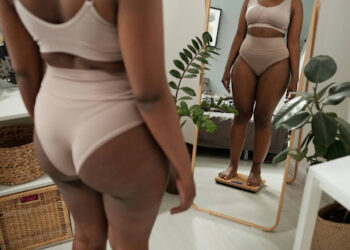By Ricky Allen and Bronwyn Watt
SKIN EXPERTS ARE SEEING MORE ADULT ACNE SUFFERERS NOW THAN EVER BEFORE. THE GREAT NEWS IS YOU DON’T NEED TO SUFFER BLEMISHES, THANKS TO NEW CLINICAL TREATMENT OPTIONS.
Breakouts might be the stuff of teenage nightmares, but ask anyone from age 19 to 90, and they’ll tell you no adult is immune to the acne curse. In fact, one highly regarded study* has shown about 60 per cent of adults aged 20-29 and 43 per cent of those 30-39 are still regular sufferers at an age when they expected to be more focused on anti-ageing than spots. Here are some key points if you’re considering clinical acne therapy.
INSIGHT ONE: What you eat and drink does make a difference
Dermatologists almost unanimously agree that lifestyle factors play an important role in adult acne. According to Dr Terence Poon from Neutral Bay Laser & Dermatology Clinic in Sydney, a perfect example is Asian-born adults who move permanently to Australia. As their diets become more Westernised, acne appears even in those who never experienced it in their youth. Having a well-balanced, healthy diet low in sugars and fats can often help considerably, as studies have shown that sugary, fatty, or dairy foods can trigger acne in some adults. Over time, people can often recognise what can trigger their outbreaks and which, if any, foods are the culprits.
INSIGHT TWO: Stress and hormones are often to blame, especially for women
Strategies for reducing and coping with stress can also help prevent outbreaks, says Dr Poon, who treats a mix of teenage and adult acne. Adult acne is more common in women and is often associated with hormones and stress. Major culprits for those in their thirties and forties are changes to hormones that occur when stopping and starting the pill, pregnancy, and conditions such as polycystic ovary syndrome (PCOS).
INSIGHT THREE: High-tech light therapy can yield amazing results with minimal downtime
The good news is new treatments are available to expert clinicians in the know. One respected example is biophotonic light treatment (Kleresca), in which fluorescent light energy (FLE) and a specifically designed gel activate an antibacterial and anti-inflammatory reaction in the skin. Generally, two in-clinic light treatments a week are required for six weeks, depending on the individual. Patients may experience some temporary redness and pigmentation, which settles down once the treatments are complete. Other clinical therapies include chemical peels, topical vitamin A, and antibiotic creams, while more serious acne may need oral antibiotics, hormonal treatments or Roaccutane.
INSIGHT FOUR: You don’t have to live with acne scarring either.
Finally, the easing of residual acne scarring is another important part of an acne treatment plan. This could involve doctor-administered steroid injections, fractionated laser treatments such as Fraxel, or even punch excision, depending on the type and severity of the scarring.
* Clinical reference: Bhate K, Williams HC. Epidemiology of Acne Vulgaris. British Journal of Dermatology 2013; 168(3): 474–85.




















